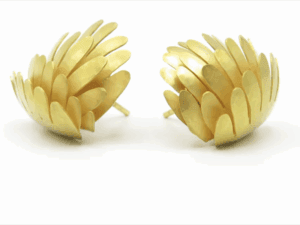When Lucy led her three older siblings into the magical world of Narnia, through an old wardrobe in an empty room, she was the same age I was, when I first read this wonderful children’s book by C. S. Lewis. I was already an independent child, and I felt validated that the heroine was a girl, and my age. In my safe, middle class, non-threatening childhood, there were not many strong female role models, but in fiction, I found them.
I could be writing about Laura Ingalls Wilder’s mostly autobiographical books, which told the life of a pioneer girl and her family in the American midwest in the 19th century. Or about the heroine of A Wrinkle in Time, by Madeleine L’Engle. These girls were also approximately my age, and they managed to achieve outsized accomplishments, despite their lowly stature in their communities.
But The Lion, the Witch and the Wardrobe was something more to me.
To start with, there was Lucy, leading the way. Things weren’t always easy, either with her siblings, who didn’t believe her story of snowy Narnia, nor in the country itself, where an evil witch had ordained that it would always be winter but never Christmas. But Lucy was curious, determined, and adventurous, and pressed on, despite being the youngest, and a girl. She took a risk going with Mr. Tumnus, the fawn, into his world, and her life was better for it.

Lewis is gentle with readers of his Narnia books. The underlying message is clearly the eternal struggle between good and evil. But to this young reader, the books weren’t morality tales, but adventures pitting the good guys against the bad guys. The head bad guy was the White Witch, coincidentally a strong female character. With her powerful wand, she regularly wreaked havoc, but the Witch could also be subtle and beguiling, and used her sweet “Turkish delight” to lure Edmund—Lucy’s brother—into her clutches. The good guys were Mr. Tumnus and his compatriots, a ragtag group of gentle animals with no magic powers and not much to recommend them, except their yearning for goodness and truth. It probably isn’t accidental that the worth of the animals is equal to that of the two-legged characters.
Aslan the Lion, whose power comes from before the beginning of time, sacrifices himself to save Edmund. But with everything at its darkest, just before dawn, ultimate goodness and power break through despair—in a roar. It was a strong and hopeful message, and I took it to heart.
Many years later, I recognized the obvious Christian symbolism of the stories, but as a child, I didn’t see it. Instead, I saw magic, and possibility, and courage, and smarts, and doing what was right. There was no worrying about fashion or popularity or what other people thought.
And from there to art jewelry: we’re also a people of independent thought, curious about new ideas, who tend to follow our own paths. My life has been enriched by meeting fascinating artists, writers, gallerists, and collectors in this amazing field. I stepped into a whole new world 20 years ago; now it’s hard to imagine my life outside it.




